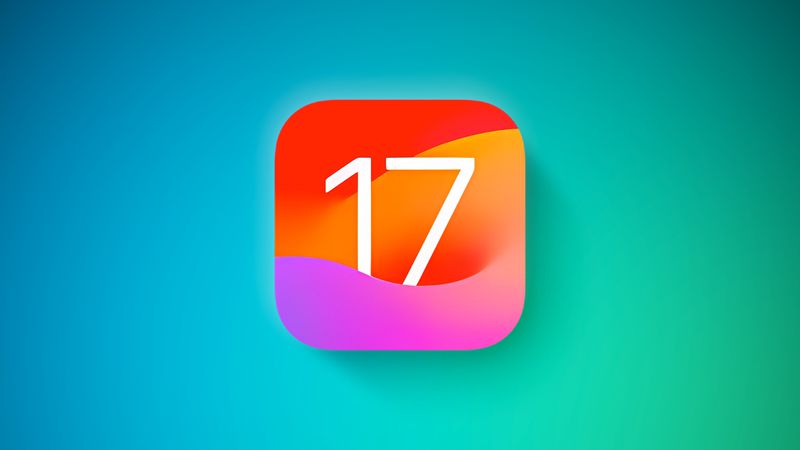
Apple enthusiasts and tech-savvy users around the world are buzzing with excitement as Apple breaks tradition by allowing non-developers to access the iOS 17 beta. In the past, beta versions were typically reserved for paid members of Apple’s Developer Program, leaving the general public eagerly anticipating the public beta release. However, this year, Apple has opened the doors to a wider audience, granting anyone with an Apple ID the opportunity to experience iOS 17 before its official launch.
iOS 17 Compatibility
Before diving into the installation process, it’s crucial to determine if your iPhone is compatible with iOS 17. Apple has dropped support for older devices, including the iPhone 8, iPhone 8 Plus, and iPhone X. The following iPhone models are compatible with iOS 17:
- iPhone 14
- iPhone 14 Plus
- iPhone 14 Pro
- iPhone 14 Pro Max
- iPhone 13
- iPhone 13 mini
- iPhone 13 Pro
- iPhone 13 Pro Max
- iPhone 12
- iPhone 12 mini
- iPhone 12 Pro
- iPhone 12 Pro Max
- iPhone 11
- iPhone 11 Pro
- iPhone 11 Pro Max
- iPhone XS
- iPhone XS Max
- iPhone XR
- iPhone SE (2nd generation or later)
Should You Install iOS 17 Developer Beta version?
While the opportunity to access the latest iOS version before anyone else is enticing, it’s essential to exercise caution. Apple advises against installing the iOS 17 Beta on your primary iPhone, as beta software may contain bugs and glitches that can affect your device’s performance.
Make an Archived Backup of Your Device First
Before proceeding with the installation, ensure you back up your iOS device. Follow these steps to create an archived backup:
- Plug your iPhone into your Mac using the provided cable.
- Allow the accessory to connect by clicking “Allow” in the dialog prompt.
- Open a Finder window by clicking the Finder icon in the Dock.
- Click your iOS device’s name in the sidebar.
- If this is the first time connecting your device to your Mac, click “Trust” in the Finder window.
- Tap “Trust” on your device when prompted, then enter your passcode to confirm.
- In the General tab, click the circle next to “Back up all of the data on your iPad to this Mac.”
- If you want to encrypt the backup, check the box next to “Encrypt local backup,” then enter a password.
- If you don’t want to create an encrypted backup or have already set up encrypted backups, click “Back Up Now.”
Remember that this backup won’t overwrite future backups, ensuring you can revert to iOS 16 if necessary.
How to Download iOS 17 Developer Beta
Now, let’s walk through the steps to download and install the iOS 17 Developer Beta on your iPhone:
- Open Safari on your iPhone and visit developer.apple.com.
- Tap the menu icon in the top-left corner of the page, then select “Account.”
- Under “Sign in to Apple Developer,” enter your Apple ID and password, and submit using the arrow buttons. Enter the two-factor authentication code sent to your devices.
- Tap the top-left menu icon again, then select “Account.”
- Accept the legal terms of the Apple Developer Agreement by scrolling down the page, checking the box, and tapping “I Agree.”
- Ensure your iPhone is running iOS 16.4 or later by navigating to Settings > General > Software Update. If you meet this requirement and have completed steps 1-5 to register as a developer, restart your iPhone. If your device is not up to date, download and install the latest update, then wait for it to restart.
- Return to Settings > General > Software Update.
- Tap “Beta Updates.” If you don’t see this option, try turning off “Download iOS Updates” (Settings > General > Automatic Updates > Download iOS Updates), then go back, and the option should appear.
- Select “iOS 17 Developer Beta” from the list, then tap “Back.”
- Wait for the Software Update screen to check Apple’s servers. Once the iOS 17 Developer Beta appears, tap “Download and Install.” Follow the on-screen instructions and patiently wait for the installation to complete.
Exploring iOS 17 Features
iOS 17 is a substantial update packed with exciting features:
- Customized Call Looks: iOS 17 lets you customize the appearance of incoming call screens, allowing for a personalized touch.
- StandBy Mode: When you place your iPhone horizontally, it transforms into a home hub displaying essential information such as your calendar, time, and home controls.
- Interactive Widgets: Widgets on the Home Screen are now interactive, enabling you to complete tasks like checking off to-do list items or controlling smart devices without opening apps.
- Improved AirDrop: AirDrop functionality has been enhanced for seamless file sharing.
- NameDrop Function: Quickly share contact details using the new NameDrop feature.
- SharePlay Compatibility with CarPlay: SharePlay now works with CarPlay, allowing passengers to enjoy their music while on the road.
In addition to these features, iOS 17 brings a journaling app, AirPlay improvements in select hotel rooms, enhancements to AirPods Pro 2 with Adaptive Audio, offline Maps, Siri without the “Hey” activation, and search and spotlight improvements.
Conclusion
The iOS 17 Developer Beta version offers a sneak peek into the future of Apple’s mobile operating system. By following the steps outlined in this guide, you can take advantage of this opportunity and explore the latest features and improvements before the official public release, scheduled for the fall.
Remember to exercise caution and back up your device before proceeding, and consider using a secondary device to minimize potential disruptions. Enjoy your iOS 17 experience and stay ahead of the curve with Apple’s latest innovations!
To Learn More – Information Courtesy
